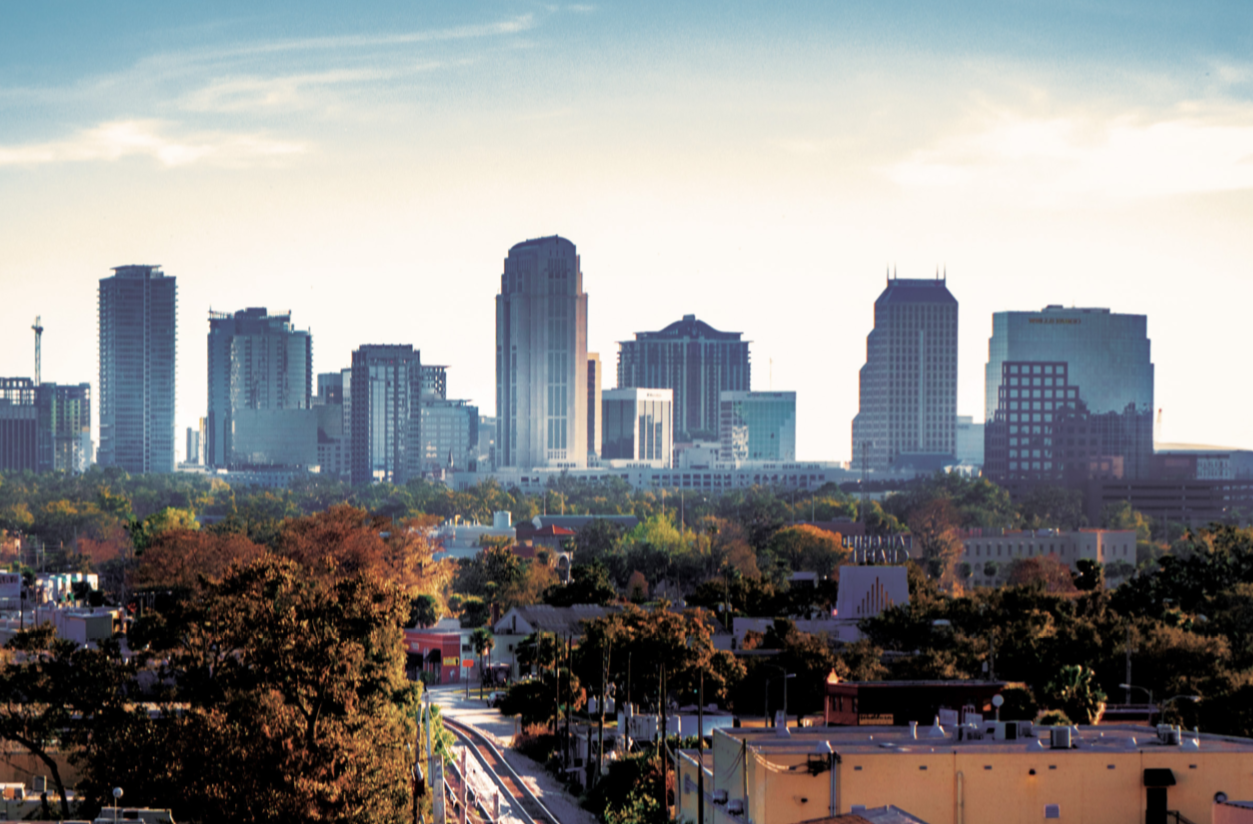
The Orlando Economic Partnership has together out look at the year 2030 in Central Florida that projects almost a million more people, many coming from outside the United States, and growing concerns about housing, wages, schools, and transportation.
The partnership, a merger of the region’s main chamber of commerce and economic development commission, released its report to the Central Florida economic community last week, with a presentation at Orange County Mayor Jerry Demings Regional Economic Summit, leaving Demings and other area political leaders pledging to plan and work together but still struggling with the magnitude of some of the ramifications.
The report, “2030: Insight into Orlando’s Future” lays out projections of strong and steady economic growth over the next 11 years for what has been Florida’s hottest job market in the past few years. But it also expresses challenges that face the region, defined by the Orlando Economic Partnership as Orange County and its six contiguous six counties, Lake, Seminole, Volusia, Brevard, Osceola, and Polk, as current economic struggles project out to when today’s first grade students will be graduating from high school.
The report projects the region will be adding people at the rate of about 1,100 a week for 11 years, reaching a total population of 5.2 million, compared with an estimate of 4.3 million today for the seven counties. That is more than the current population of the Miami-Fort Lauderdale-West Palm Beach market.
The report predicts that the current trends of drawing newcomers from around and outside the United States will continue, making the market one of the most diverse in the country. The population also will age, with a community featuring more senior citizens than children by 2030. And the report cautions that much needs to be done to prepare.
“It’s the foundation for Orlando’s future. We take the opportunity to highlight, to add foresight the conversation around infrastructure, our economy as a whole, our future workforce. What are the needs? What should we be challenging our elected officials to be talking about? How can help them make decisions today? How can we help to inform businesses of opportunities that exist here?” said Orlando Economic Partnership President Tim Giuliani. “So this report begins to paint the picture of what our region will look at in 2030.”
The report includes a lot of economic projections that area leaders would welcome, including a prediction that in 11 years Orlando’s employment should grow by 19 percent, 10 percentage points faster than the United States average. It predicts that home and healthcare services will be the fastest growing field, and that manufacturing jobs also will come to Orlando faster than the national average.
But it also rasied concerns:
– The teacher supply gap is expected to grow significantly, reaching an annual shortage of as many as 1,100 by 2030. And building enough schools also will remain a concern.
“Another significant challenge this creates is the funding needed to build more schools to comply with Florida’s state constitutional requirement of no more than 25 students per class,” the report states.
– Despite the anticipated increases in higher-paying sectors, Orlando area wages are projected to still be lower than average, and the region’s poverty rate, now at 16 percent, could be exacerbated.
– Affordable housing shortages could continue to be a problem.
“If housing costs continue to escalate as they have in the past few years, the graduates of the class of 2030 will have a difficult time finding affordable housing, especially if wage stagnation continues,” the report states.
– Transportation options could be improved by the completion of the I-4 Ultimate project through Orange County, the expansion of SunRail, the addition of Virgin Trains USA service, the Wekiva Parkway will complete an expressway outerbelt around much of Central Florida, the opening of the new South Terminal at the Orlando International Airport, and the revolution of autonomous vehicles. But traffic is expected to build, and transit options may lag.
The transportation issue led to conversation among several area leaders gathered Friday for a roundtable discussion of the report’s findings, but no clear conclusion.
“We are behind the eight ball without a dedicated source of transportation funding,” Demings said.
“I’ll go ahead and sign up for the dedicated transportation funding source,” offered Orlando Mayor Buddy Dyer.
“The conversation about a dedicated funding source… I mean the same conversation we’re having today we were having 20 or 30 years ago,” said Seminole County Commission Chair Brenda Carey. “So we have to figure out how we can move that forward, because we can’t just keep talking about it.”



